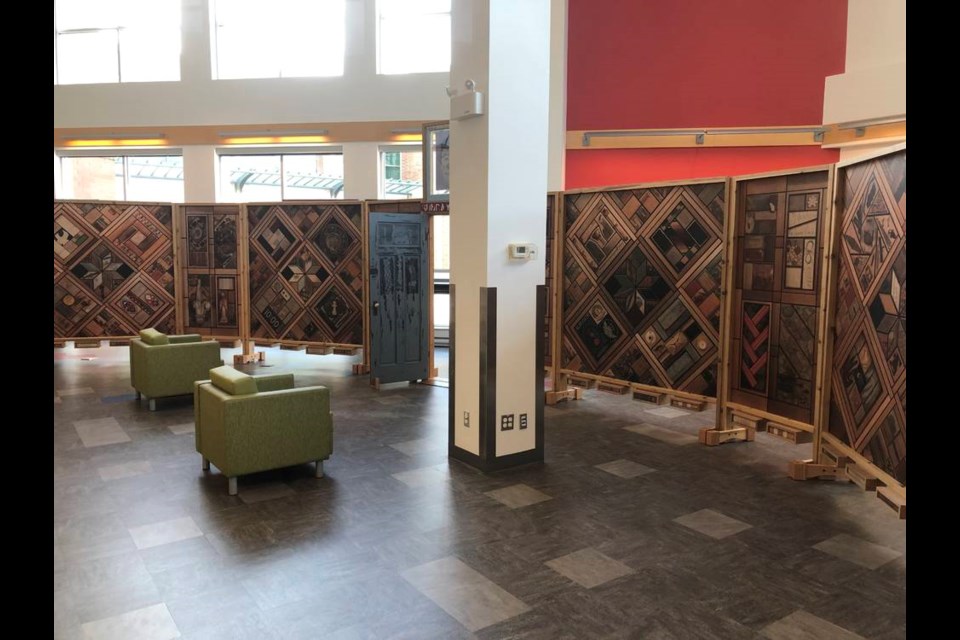A reproduction of an art installation made with items recovered from communities where residential schools once operated has come to Nanaimo’s harbourfront library, as people across the country grapple with the discovery of unmarked graves near former schools.
Artist Carey Newman, whose traditional name is Hayalthkin’geme, created the Witness Blanket from hundreds of items reclaimed from residential schools, churches, government buildings and cultural centres in 77 communities across the country, ranging from a child’s shoe to pieces of floors, walls and doors, religious symbols, and children’s books, clothing, hair and toys.
The piece, inspired by a woven blanket, is intended to act as a monument recognizing the atrocities of the residential school system, where children were neglected, malnourished, physically and sexually abused, and prohibited from speaking their languages.
The original Witness Blanket toured Canada extensively and is now undergoing conservation at the Canadian Museum for Human Rights in Winnipeg. The museum has partnered with Newman to create a true-to-scale reproduction of the blanket, with photos of the objects in the original piece.
That reproduction is on display at the Nanaimo harbourfront branch of the Vancouver Island Regional Library until Sept. 30.
Anthony Martin, manager of the Nanaimo harbourfront library, is encouraging people to visit the library to experience the “visceral, evocative, and thoughtful representation of a dark and deeply traumatizing legacy in this country.”
“The importance of this piece, especially in light of the recent and ongoing discoveries at former residential schools, cannot be overstated,” he said.
Newman said the goal is to create a tangible connection to the history of residential schools through objects and survivors’ stories — something that’s important as long as there are people who continue to minimize the impacts or intent of residential schools.
The recent discoveries of unmarked graves near former schools confirm the stories already shared by residential school survivors, he said.
“And the fact that people are surprised by it is an indication of how many people haven’t heard, haven’t been listening or had dismissed it as something less than it was,” Newman said.
The blanket is arranged in a semi-circle, designed to feel like an embrace, and the library has set up chairs within it where visitors can absorb the piece, Martin said. A free app allows people to select objects in the blanket to learn more about their origins.
“We’re seeing people who are, I think, deeply moved, but in a way that’s not easily communicable,” Martin said.
The library was able to host the Witness Blanket this summer, two years earlier than expected, because of pandemic-related cancellations in other locations, said Jason Kuffler, sales and marketing officer for the regional library system.
The piece had been sitting at a location in Ontario for much of the pandemic.
The library is hoping to hold virtual programming events, such as a viewing party and discussion of the documentary depicting the making of the blanket.



